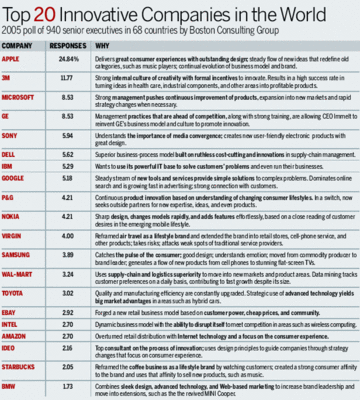By Daniel Colbert
Small Times Guest Columnist
Feb. 28, 2005 – In his novel "Cat's Cradle," Kurt Vonnegut created three new words suitable for nanotechnology. Vonnegut defines the words in his collection of essays, "Wampeters, Foma, and Granfalloons": "A wampeter is an object around which the lives of many otherwise unrelated people may revolve. The Holy Grail would be a case in point. Foma are harmless untruths, intended to comfort simple souls. An example: 'Prosperity is just around the corner.' A granfalloon is a proud and meaningless association of human beings." Nanotechnology is undeniably a wampeter. I never run into people I see at nanotech meetings anywhere else. Much of the hype surrounding nanotech qualifies as foma – such promises as free, perfectly clean energy or elimination of all disease. Finally, nanotechnology has given rise to a granfalloon, in the sense that its range is so broad that attempting to capture its breadth under one canopy is ultimately meaningless.
Why this rant? Because I feel it's important to dispel the notion that there is some intrinsic value to talking about all the disparate activities of nanotechnology together; my hope is that once that is realized, we can focus on endeavors that have real value. Nanotechnology is NOT an industry. (While this assertion receives universal agreement in hallway conversations at those meetings, I inevitably hear speakers at the same meetings referring to the nanotech "industry.")
I have never heard any "definition" for nanotechnology that sounds cogent and useful, although it seems that every PowerPoint presentation is obliged to have a slide offering a definition. The other day, I even read an epistle from a nanotech high-flyer talking about the nanotech value chain! There simply is, nor can there possibly be, any such thing.
There are, however, materials, which is a large part of what people really mean when they use nanospeak. We are living in an age of materials. Our control over materials and their properties is not a sudden development, but it is one that's accelerating. The Iron and Bronze Ages were thousands of years apart, but a huge menagerie of polymers, for example, were developed in just the past 50 years! We are in the process of gaining increasing control and finesse over the structure of matter at the smallest scale (the nanoscale) where material properties emerge. This is where authentic focus of discourse and activity is, and ought to be.
Peter Grubstein and Tony Cheetham recognized this when they founded NGEN Partners in 2001. Years of incubation in university, government, and less frequently, corporate labs were beginning to hatch a number of private enterprises based on materials science advances. Yet, venture funding was scarce relative to other technology sectors such as information technology, optoelectronics and biotech. And, for good historical reasons: Materials companies have traditionally been low margin, quick to commoditize and generally lacking pizzazz. These are not favored characteristics of venture-financed companies.
But change was under way, precipitated by roughly two or three decades of federally funded university research in materials science, which had incubated nanoscale technology to the point where its leading edge seemed ripe for venture investing. Fullerenes, clays, nanocomposites, nanowires, nanotubes, dendrimers and other novel materials began populating the landscape.
Materials were being characterized in the university, as scientists will do, but in most cases, just what the materials might be useful for remained a mystery. Fullerenes provide a powerful and revealing example. As my former collaborator, Rick Smalley, has said, "Bucky still doesn't have a job." In buckyballs, we have a remarkable new chemical and material entity, with undeniably interesting properties, yet we haven't figured out what to do with it. This is generally the rule in the materials world, rather than the exception.
Much more work is required beyond discovery and characterization to bring a new material to commercial success. Even when some useful application can be found, scaling production at economic cost is far from trivial in most cases. In fact, words that strike terror in the heart of venture capitalists working the materials sector are: "It's only engineering from here on out." There is now, however, a strong pipeline flow of commercial enterprises enabled by new materials, or where old materials are applied in new ways. The venture challenge, of course, is sorting out the likely winners from the losers.
One way to minimize risk of this challenge is to obtain more and better information. This is where NGEN's model becomes valuable, and how it differentiates itself from other venture firms in the materials space: Our venture partners can dive deeply into the technical risks, and our strategic limited partners provide assistance in technical and market due diligence. Although many technology venture firms hire highly trained scientists, few firms (or none?) include a chief technology officer, which is my position with NGEN. The mix of broad technical and marketing resources lets us, as value investors, make decisions based on sound information.
Nanotechnology is not perfectly congruent with materials, but the overlap is large. New buzzwords and hype may be useful in generating excitement and funding, but likely do more harm than good if in advance of commercialization. At least that's the opinion of this reformed member of the nanotechnology granfalloon.
 (SOURCE: http://www.smalltimes.com/document_display.cfm?document_id=8874)
(SOURCE: http://www.smalltimes.com/document_display.cfm?document_id=8874)
 In a peace and conflict issues class I took last spring, I had the opportunity to see some images of the West Bank barrier being built during an excellent talk by a young Isreali refusenik about his first-hand experiences in Israel. The images he showed included his own photographs -- striking in content and composition -- of the wall that definitely remained embossed in all our minds even several months later. Many of us particularly recalled a particular photograph of the barrier wall along a highway with contrasting colorful "Brave New World" like murals painted on depicting a world that doesn't exist in those parts.
Today, a friend of mine sent me an article about a similar story reported on BBC NEWS Online. This one a tearful satire.
In a peace and conflict issues class I took last spring, I had the opportunity to see some images of the West Bank barrier being built during an excellent talk by a young Isreali refusenik about his first-hand experiences in Israel. The images he showed included his own photographs -- striking in content and composition -- of the wall that definitely remained embossed in all our minds even several months later. Many of us particularly recalled a particular photograph of the barrier wall along a highway with contrasting colorful "Brave New World" like murals painted on depicting a world that doesn't exist in those parts.
Today, a friend of mine sent me an article about a similar story reported on BBC NEWS Online. This one a tearful satire.












